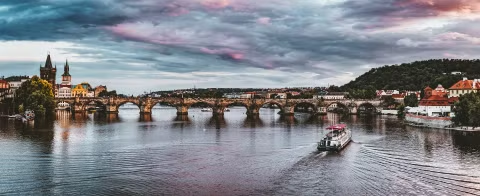
- Home›
- Czech Republic
Czech Republic Private Tours & Local Tour Guides
Plan a Trip to Czech Republic with Local Tour Guides, and Prague and More.
Popular Czech Republic Tour Guides
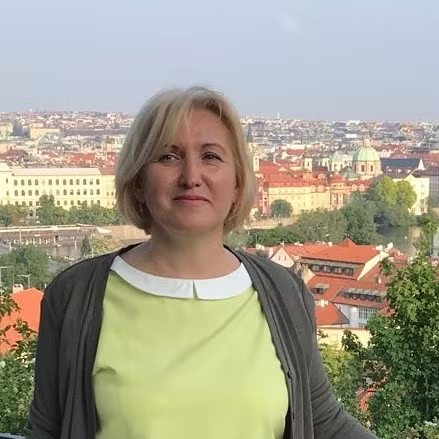
Inna P.
Dear guests of Prague, I am a professional licensed guide and I have been working for 20 years. My tours are suitable for individuals, families as well as corporate events. I am passionate about history and architecture. Every day I utilize my knowledge when guiding my clients through the busy and quiet streets of Prague and other towns, such as Cesky Krumlov, Kutna Hora or Karlovy Vary. Prague is one of the busiest touristic places in Europe, which is growing every year, attracting more and more people from allover the world. I look forward to meeting you here and show you around. It is going to be magical experience.
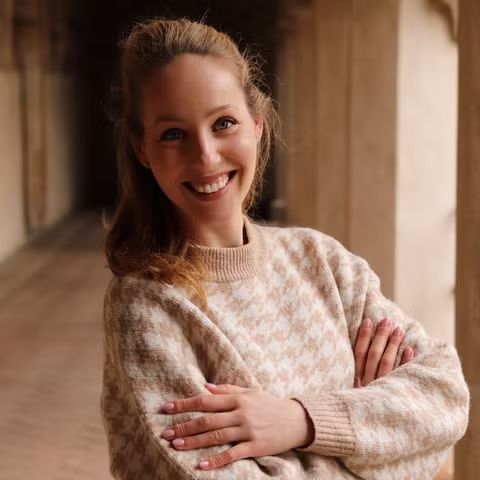
Miriam A.
See Prague through the eyes of a local! My name is Miriam, and not only am I a guide certified by the Ministry of Regional Development, but I also have a true passion and enjoy sharing the beauty and history of my vibrant hometown with anyone and everyone. Born and raised in this beautiful city, you will find no better person to show you all the secret nooks and crannies as well as the most famous sights of Prague. In my seven years of experience as a private guide, I have had the pleasure of sharing Prague's secrets with people from all walks of life. Whether you are interested in going off the beaten path or seeing Prague in all its grandeur, I will know where to take you and what there is to see.
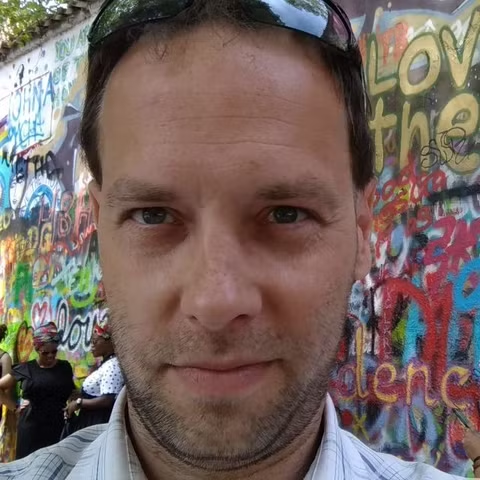
Petr M.
My name is Petr and I am a native Praguer. I have spent in this beuatiful city my entire life. I have studied at Charles University, the program Social Studies (history, psychology, sociology and political science). Already during my studies I began working as a tourguide and just fell in love with this job that much, that I am doing it till present days. I also have some military experience and well oriented in religious and political problemacy - not only regarding Czechia and Czech history. My main focuses as of a tourguide are: political, miltary and religious (aspects of) history and present days. Besides I strictly get sticked to the facts (since being a Czech ;-) I always accompany ny tours with a traditional Czech humour, stating some funny facts, telling some cool Czech jokes etc. I rather prefer in informal style of guiding - considering and treating travelers more like friends than just "clinets/customers". I am open-minded , positive, humorous, but dedicated to the facts at the same time. My asset and competition edge is providing travelers with some little/leeser known facts which they won´t find in bedekers. I am looking forward to meet you in Prague! ;-)
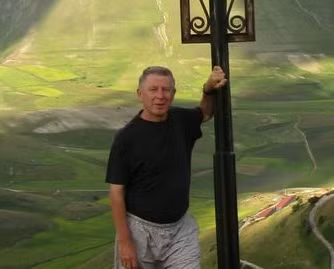
Václav B.
I guide since 1991 as a qualified licensed guide (Czech Rep., Prague, Jewish museum Prague). I was born in Prague. I know well Czech landscape, hiking, history. Speak English, German, Russian, Czech, Slovak . Visited more European countries, Ukraine, Russia, Iran...
New Czech Republic Tour Guides
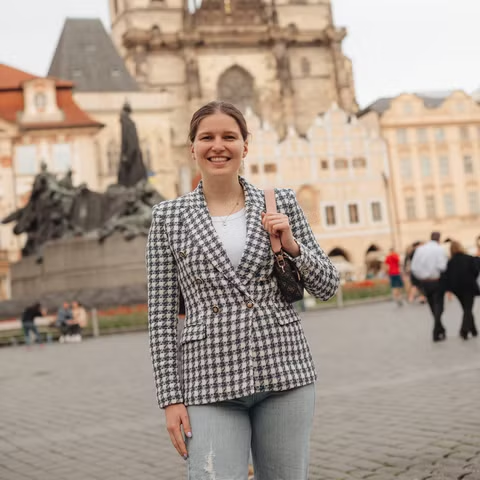
Polina K.
Hello, It is nice to e-meet you here, my name is Polina and I am a professional tour guide and concierge with more than 10 years experience in customer service. They say that the most valuable thing that we bring back from travels is our memories. You might forget the dates, names and cafeteries you spent your time in, but you will always remember the kind gesture of the waiter who was serving your morning coffee or a smiley lady at the local market who admired the way you tried to greet her in her mother language. Sweet memories of people who surrounded us during our trip create the experience we will be sharing with our beloved ones back home. And that's why it is so important to find the right guide for your journey. I often hear the feedback from my guests: “It is obvious that you are in love with your job”. And they are absolutely right. I am an energetic, funny, vibrant guide who does not switch on “the boredom mode” and tries to do her best to make it special for every single guest of hers. If you are looking for someone who will make your trip special and memorable, don't hesitate to contact me. I would be happy to scroll with you around magical Prague. With warmest regards, Your guide, Polina
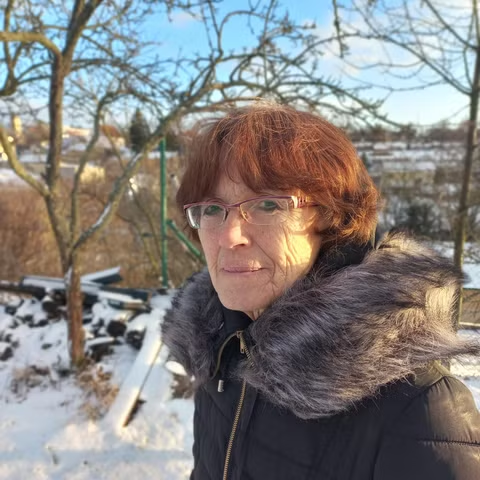
Eva D.
I am in the tourist industry since 25 years, as a local guide in Prague I can show all major Prague highlights to my clients easily. I am interested in history, literature, arts, design, film, gardening and much more. One day is not enough for all my hobbies. I can guide not only in Prague but everywhere in the Czech Republic and even in other countries in Central Europe (Germany, Austria, Poland, Slovakia, Hungary, Slovenia....) My favourite tours: Prague castle, Jewish quarter, 1000 years of local architecture, WWII and communism in Czech Republic...

Eva A.
I love my job. Working as a guide brings me lots of joy and happiness. I specialise on private tours. I have a lovely son who was adopted when he was 10 months old. I love dogs. I have a girl of a french little bulldog.

Yulia K.
When I visited Prague as a tourist the first time, I felt in love with this city and I still love it after 9 years living there. I like to meet people and show them Prague.. to share with them beautiful hidden places, to tell them about life and traditions in CR, to make them fall in love with Prague as strong, as I do.
Popular Czech Republic Private Tours
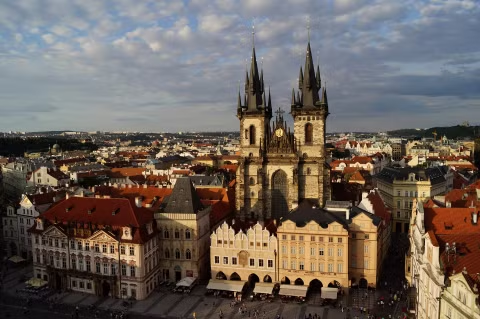
Acquaintance with the Capital of the Czech Republic
You’re tied for time but eager to learn a lot about one of the most beautiful cities in the world… This tour is for you. Interweaving of history, legends, myths and shades of fairy tales from childhood will leave a lasting impression in your memories. During the tour you will see and visit the most significant historical places of the city, enjoy a short Vltava River cruise, taste traditional Czech cuisine and appreciate the flavor of the famous Czech beer.

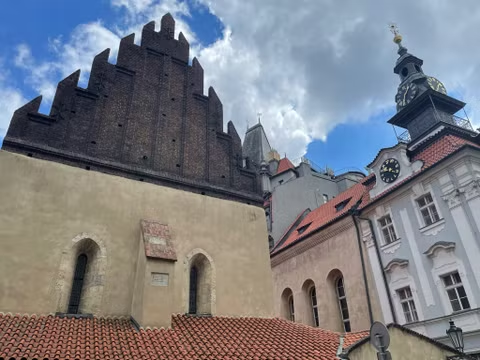
Josefov - Jewish Ghetto Tour
Prague is one of the oldest and most important Jewish centers in Central Europe. To be able to give a tour inside its Synagogues, the Old Jewish Cemetery, or the Shoah Memorial of Prague you have to be licensed by the Jewish Museum of Prague (which I am). Let me introduce you to this place full of history, mysticism, and ancient architecture.

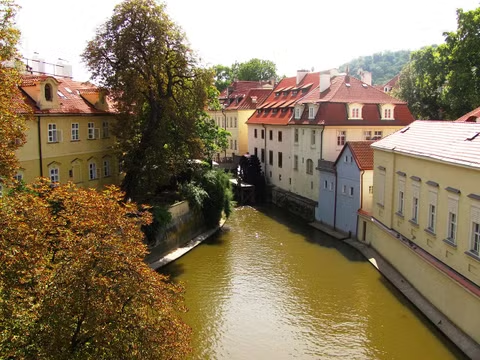
Half-Day Private Tour
This tour covers many major sights of Prague. Travelers can customize the tour's content up to 4 hours of duration. Mainly it is possible to cover either Prague Castle and its surroundings + a bit more or to focus on the Old and New Town (inc. former Jewish Quarter) and the Lesser Town, just below the Prague Castle. The details can be discussed with a guide on spot, so the itinerary is just orientational.

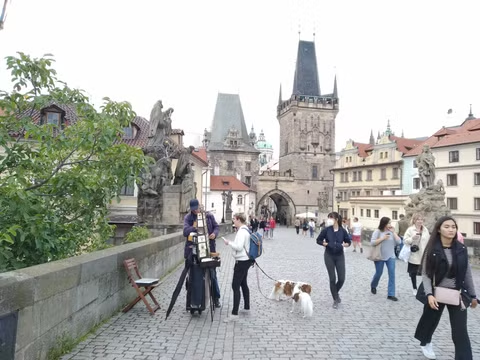
Prague essential
Slow walking trough the most beatiful town all over the world, with stops for refreshment. Stories, architecture, art in one day. We will see many nice places, for which there is no place in this short description. Prague is recommended to show round on foot, there are narrows streets, not alloved for cars, sights are not much spreaded. During whole day we will walk about 4 km. You must see - tour. I am looking forward to discover beauties of Prague and Czechia.

New Czech Republic Private Tours
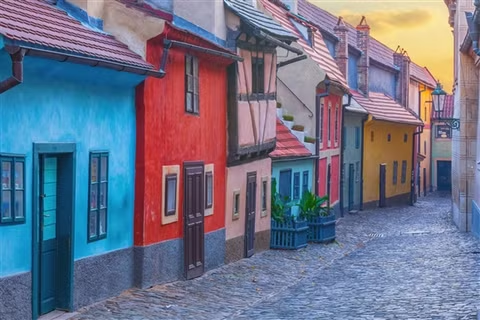
Prague Castle Interiors
We will visit together the most significant Czech monument - an ancient symbol of the Czech State with a tradition of more than 1000 years. Together we will dive into its history and see St. Vitus Cathedral, Old Royal Palace, St. George’s Basilica and Golden Lane.

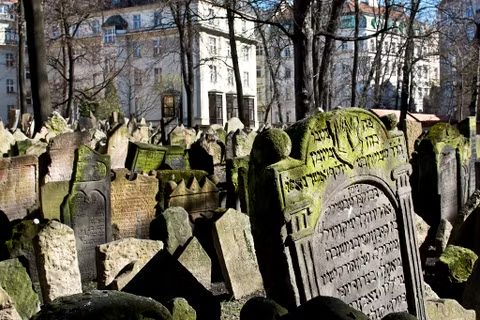
Prague Jewish Quarter Half Day Tour
Are you hungry to learn more about the history of Jewish people? Prague will be a good place to start your learning journey. Jewish Quarter of Prague hosts the 2nd widest collection of Jewish items right after Jerusalem. Together we will go through the Jewish Quarter Museum which consists of 4 synagogues + Old Jewish Cemetery and Ceremonial Burial Hall. At the end of our tour you will leave with a wide knowledge of European Jewry history

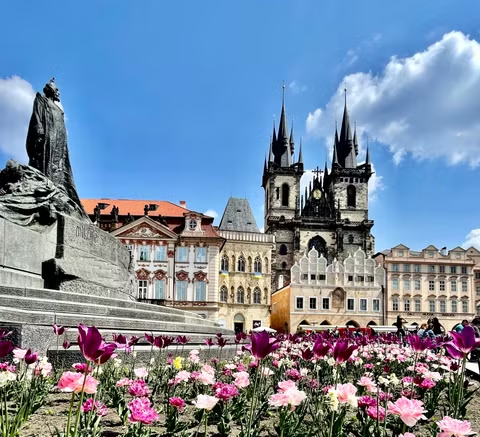
The best of Prague in 4 hours
There are many different ways to explore Prague; you might choose to wander through the city on your own or perhaps join a group tour. Experiencing this city with a born-and-raised private guide will make your visit unforgettable. With me, you can expect more than just a dry lecture about the well-known tourist spots. I will take you to places that even many locals have never heard of, all the while providing a gripping account of our country’s history.

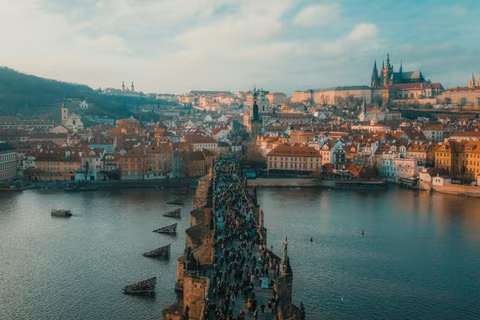
Prague Half Day Walking Tour
You are short of time and want to see the best highlights of Prague? Then Best of Prague tour will be a perfect match for you. During our tour we will cover main gems of Prague: Charles Bridge, Prague Castle, Jewish Quarter and Old Town. Itinerary of the tour can be easily adjust upon your wishes.

Popular Czech Republic Private Cars

Private Transfer from Prague to Passau with 3H stop in Cesky Krumlov (1-14 pax)
Take advantage of a private transfer from the medieval gem Prague to the small Danube port town of Passau and break your journey with a 3-hour stop in the picturesque historical city of Cesky Krumlov. Enjoy the scenic drive through the beautiful Czech and German countryside and arrive at your destination relaxed and with nice experiences.

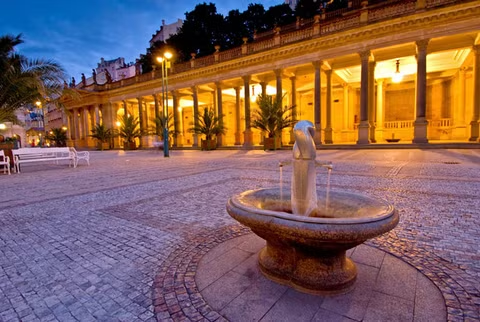
Karlovy Vary - day of SPA from Prague
This is fantastic trip to the SPA city by car. If you are looking for the time to relax, just choose this tour. Karlovy Vary is only 1.5 hour to drive from Prague. This place was founded on 14th century and was well-known during 18-19c as the best place for relaxing. It has more than 80 springs. You will get a special drinking cup as gift, so during city tour, you will have the chance to taste the water exactly from mineral spring. Then after lunch, lets go to swim and sauna.

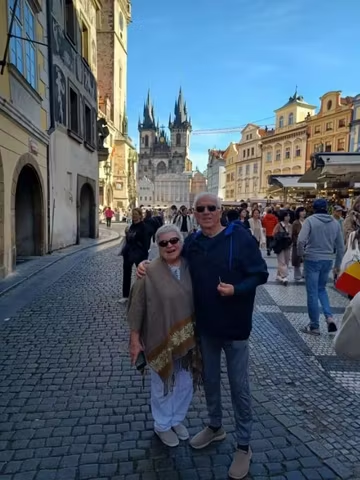
Private Transfer from Prague to Vienna with 3H stop in Cesky Krumlov (1-14 pax)
Take advantage of a private transfer from the medieval gem Prague to the imperial-feel city of Vienna and break your journey with a 3-hour stop in the picturesque historical city of Cesky Krumlov. Enjoy the scenic drive through the beautiful Czech and Austrian countryside and arrive at your destination relaxed and full of nice experiences.

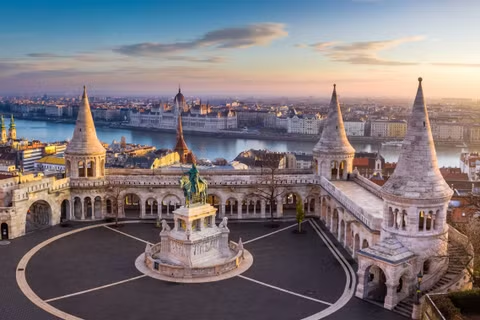
Private Transfer from Prague to Budapest with 3H stop in Cesky Krumlov (1-14 pax)
Take advantage of a private transfer from the medieval gem Prague to the magnificent and multi-cultural city of Budapest and break your journey with a 3-hour stop in the picturesque historical city of Cesky Krumlov. Enjoy the scenic drive through the beautiful Czech, Austrian, and Hungarian countryside and arrive at your destination relaxed and full of nice experiences.

Czech Republic Tour Reviews
Shelley P.
“Unique experience with a great guide”
Miriam had a great passion for Prague and took care of all the details so we could enjoy the scenery and learn from her about history and culture. A great afternoon!
Shelley P.
“Perfect experience ”
Miriam was responsive prior to our visit and proved to be a knowledgeable, friendly and flexible guide. We used her for this tour and another during our visit to Prague. Great experience and one of my best with a private guide.
Elena K.
“Polina is great guide!”
We had a 3hr walking Prague tour with Polina today - very knowledgeable and nice guide. She customized the trip the way we wanted it - and she gave advises on what to do next and good tips for our further stay. We highly recommend Polina to all! Thank you! Спасибо, Полина - нам очень направилось все. Лена, Виталий и родители.

Polina K.
Thank you so much for your kind review. It was my pleasure to get to know you and be your guide in Prague.
Czech Republic Private Tour Guide
Behold rich history and culture in the Czech Republic with a private tour guide. Discover hidden gems and dive into captivating experiences. Czechia awaits!
Explore Prague's lesser-known corners with a local tour guide that knows their way around the popular location. You get the best of both worlds, experiencing major attractions, and lesser known sites. Wander through the charming district of Vinohrady, where tree-lined streets, Art Nouveau architecture, and trendy cafés create an authentic locally beloved experience.
Uncover hidden art installations, like the rotating Kafka Head statue, and delve into the stories behind them. A private tour guide ensures you don't miss the intriguing details that make the Czech Republic one of a kind.
Czech Republic Frequently Asked Questions
How many days in the Czech Republic is enough?
Generally, 4–5 days in the Land of The Bohemian Crown will allow you to see the best of Czechia, while having some much-needed rest time in between. Need some itinerary inspiration? Check out these Czechia Tours;
- The Best Of Prague In One Day Tour
- Two Sides Of The Vltava River (Double Tour)
- Relaxing Day Trip to Karlovy Vary SPA city
With over 2000 castles, several hiking routes, and the vibrant cities of Prague & Brno to keep you busy, 5 days might not be enough! For even more Czech fun, look through our Czech Republic private tours page.
Generally, 4–5 days in the Land of The Bohemian Crown will allow you to see the best of Czechia, while having some much-needed rest time in between. Need some itinerary inspiration? Check out these Czechia Tours;
- The Best Of Prague In One Day Tour
- Two Sides Of The Vltava River (Double Tour)
- Relaxing Day Trip to Karlovy Vary SPA city
With over 2000 castles, several hiking routes, and the vibrant cities of Prague & Brno to keep you busy, 5 days might not be enough! For even more Czech fun, look through our Czech Republic private tours page.
What is the best month to visit Czech Republic?
This depends on what you’re looking to do, but generally, the shoulder seasons of March to May (9 – 20°C) & October to September (13 – 24°C) offer the perfect balance of moderate weather, minimal crowds and fun activities (Prague Grand Prix & the Spring International Music Festival)
Want to know more about Czechia? Check out our Tourism In The Czech Republic Statistics article.
This depends on what you’re looking to do, but generally, the shoulder seasons of March to May (9 – 20°C) & October to September (13 – 24°C) offer the perfect balance of moderate weather, minimal crowds and fun activities (Prague Grand Prix & the Spring International Music Festival)
Want to know more about Czechia? Check out our Tourism In The Czech Republic Statistics article.
Why is the Czech Republic famous for tourists?
The Czech Republic has several regions that draw in millions of tourists looking to experience history, arts, culture and relaxation, with these regions being the most popular;
- Prague
- Central Bohemian Region
- South Bohemian Region
- Plzeň Region
- Karlovy Vary Region
What about venues? Well, these are the most visited sites in the country.
- Petřín funicular
- Prague Castle
- Prague Zoo
- Aquapalace
- Lower Vítkovice
The Czech Republic has several regions that draw in millions of tourists looking to experience history, arts, culture and relaxation, with these regions being the most popular;
- Prague
- Central Bohemian Region
- South Bohemian Region
- Plzeň Region
- Karlovy Vary Region
What about venues? Well, these are the most visited sites in the country.
- Petřín funicular
- Prague Castle
- Prague Zoo
- Aquapalace
- Lower Vítkovice
Is it safe for US citizens to travel to Prague?
YES. Prague has a safety ranking for walking around during the day of 91 out of 100, and a nighttime safety ranking of 73.8 which is higher than cities like Paris and New York. To add to the appeal, US citizens do not have to have a visa for tourism travel that falls under 90 days.
YES. Prague has a safety ranking for walking around during the day of 91 out of 100, and a nighttime safety ranking of 73.8 which is higher than cities like Paris and New York. To add to the appeal, US citizens do not have to have a visa for tourism travel that falls under 90 days.
What is the most visited city in the Czech Republic?
Prague, also known as the City of A Hundred Spires, is the most visited city in Czechia, with around 19 million domestic and international tourists visiting the city in 2022.
Prague, also known as the City of A Hundred Spires, is the most visited city in Czechia, with around 19 million domestic and international tourists visiting the city in 2022.
Latest Czech Republic Articles
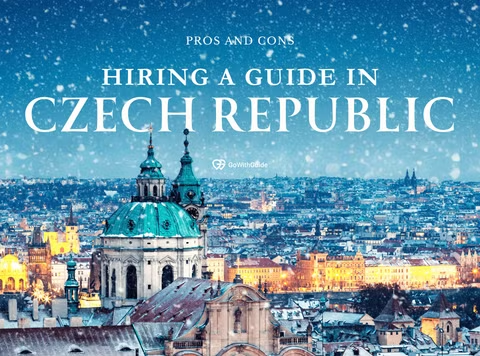
Hiring A Guide In The Czech Republic: Pros & Cons
Czech Republic
Going on a trip is always fun…until you have to start making decisions. Should I travel during summer or autumn? Should I bring my film camera, although I don’t have any space in my backpack? Hmm, a guide would be an excellent idea, wouldn’t it? If you’re...


Tourism In Czech Republic Statistics 2023: The Ultimate Guide
Czech Republic
Did you know that the Czech Republic has over 2,000 castles to explore, making it the country with the highest density of castles? If that sounds fascinating to you, uncovering this magnificent country's hidden treasures will leave you with many questions...


Top 10 Most Popular Foods in Prague
Prague, Czech Republic
A trip to absolutely any country is never complete without a full on feast of the local cuisine. With influences from various European countries and decades upon decades of tradition in its recipes, the city’s local fare is not one to miss. Join us as we ...


7 Hidden Gems to Visit in Prague
Prague, Czech Republic
As one of Europe’s most beautiful and well-kept cities, Prague is a dream destination equipped with every kind of tourist’s fancy. From must-see architectural wonders in the city’s Old Town, to traveling in aristocratic elegance through the Vltava River, ...

All Tours Customizable
Start By Messaging Your Guide
100% Private Tours
Just You and Your Local Tour Guide
Quality Assured Guides
Screened and Verified via Interviews
